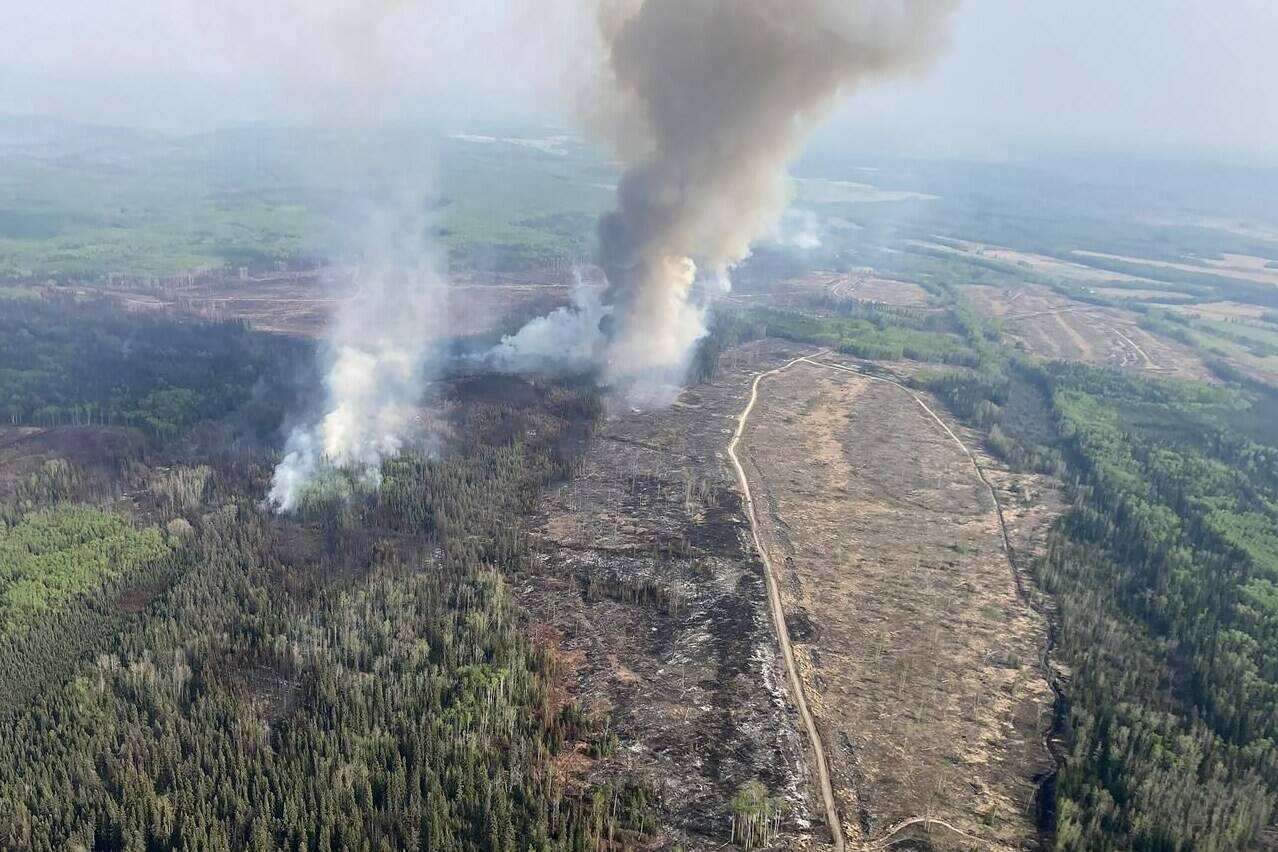The director of operations for BC Wildfire Service said “challenging” weather and fuel conditions in the coming days will hamper firefighting efforts in the northeastern corner of the province.
And more fires could be on the horizon in other parts of B.C.
“We will still be out there, we will still be attempting to control all the fires, existing and new to begin,” Cliff Chapman said. “I just think it is important for everyone to know that the fuel conditions, being what they are, and the weather being what it is, it is going to be challenging suppression across the province for us, particularly in the north, but as the heat wave continues through this week, we are going to start see the hazard increase in the south as well.”
Chapman made these comments Wednesday (May 16) speaking from Kamloops,where Forest Minister Bruce Ralston joined him following a tour of the Provincial Wildfire Coordination Centre and Kamloops Fire Centre.
Crews have responded to 206 wildfires since Jan. 1 with 85 wildfires in the Prince George Fire Centre covering the northeastern quarter of the province.
Chapman said the area has seen the most fires to date with perhaps none more threatening than the Stoddart Creek wildfire, one of five wildfires of note in the province, all near the Alberta boundary, three burning out of control.
That fire prompted authorities Monday (May 15) to issue an evacuation alert for all 22,000 residents of Fort St. John.
The nearby Red Creek fire has also prompted authorities to issue an evacuation order for a large rural area to the north. Human activity is the suspected cause of both fires.
RELATED: B.C. wildfires put all of Fort St. John on alert, nearby areas on evacuation order
Chapman urged residents in the affected areas to remain calm and look out for each other amidst reports of panic purchases of gasoline.
But if Chapman called B.C.’s northeastern corner the “primary hotspot” for wildfires in the province, it likely won’t be the only one.
He said B.C. is currently experiencing a much-drier-than-normal month of May after a drier-than-usual April and he expects temperature records to fall across the province in the coming days.
“This is like summer right now,” he said.
He added that the extreme fire hazard of B.C.’s northeast will “slowly but surely” spread to the rest of the province all the way down to the border with the United States including the Coastal Fire Centre, which includes the Lower Mainland and Vancouver Island.
Chapman said it is too early to tell how the rest of the fire season will shape up. Historically, June has seen rain and this year could shape up to be like 2015, when the province experienced significant fires in May, only to see a normal fire season for the rest of the year.
But parts of the province have already entered the “core fire season” as crews are fighting fires totaling 50,000 square-kilometres in size in the northeast alone, he added. The traditional 10-year-average for this time of the year is about 11,000 square-kilometres.
If Chapman painted a dire picture for the moment, he also offered some relief.
The high-pressure ridge currently fuelling record temperatures is expected to break down early next week, he said. This will return temperatures to more seasonal norms, but could also lead to lighting strikes, he said in urging British Columbians to be conscious of weather conditions and report smoke. B.C. cannot afford lighting-caused wildfires on top of human-caused ones, he said.
Chapman also used the occasion to announce bans on small and large open burns across the province starting Thursday, if not already in place. The Prince George Fire Centre will also see a campfire ban come into effect Thursday, he added.
Chapman also did not rule out the possibility of a province-wide camp fire ban, either at the end of this week or next week, adding that it could be implemented very quickly, depending on the conditions.
@wolfgangdepner
wolfgang.depner@blackpress.ca
Like us on Facebook and follow us on Twitter.

